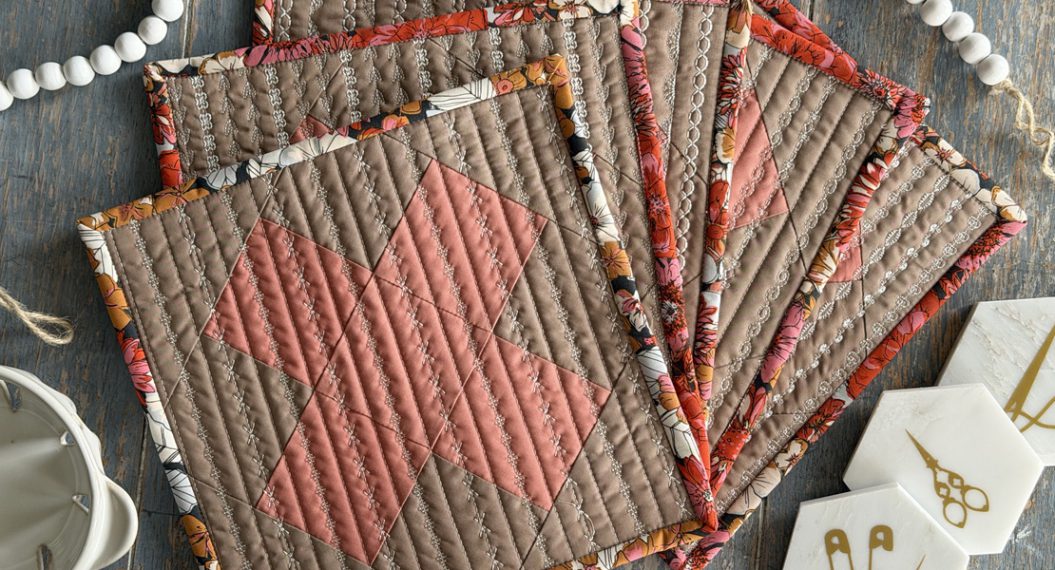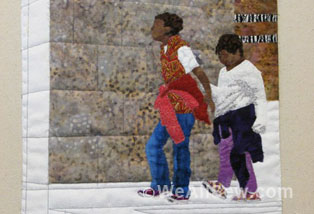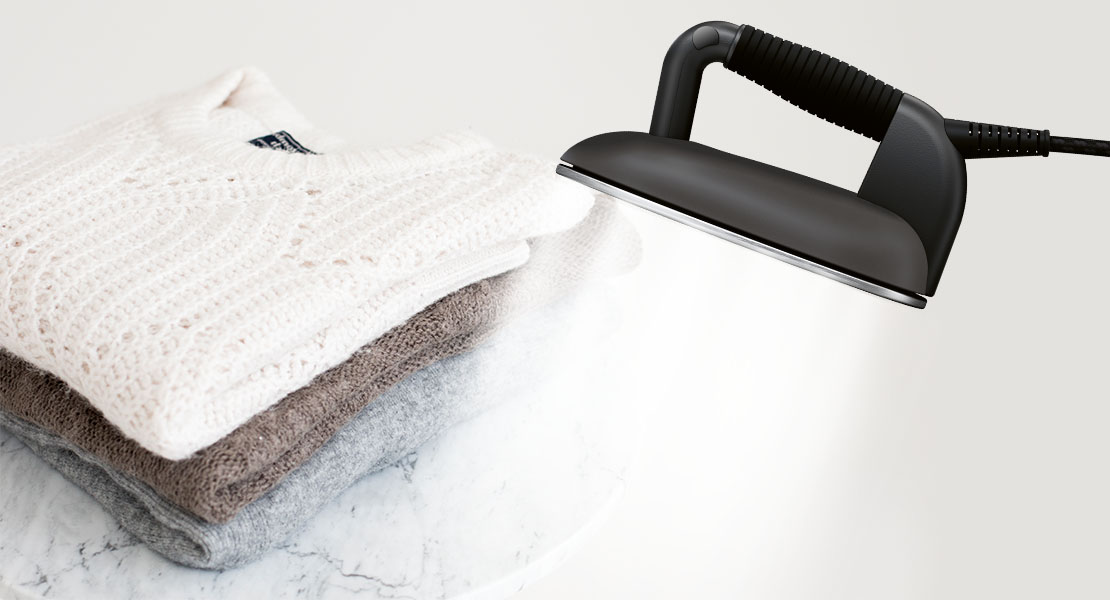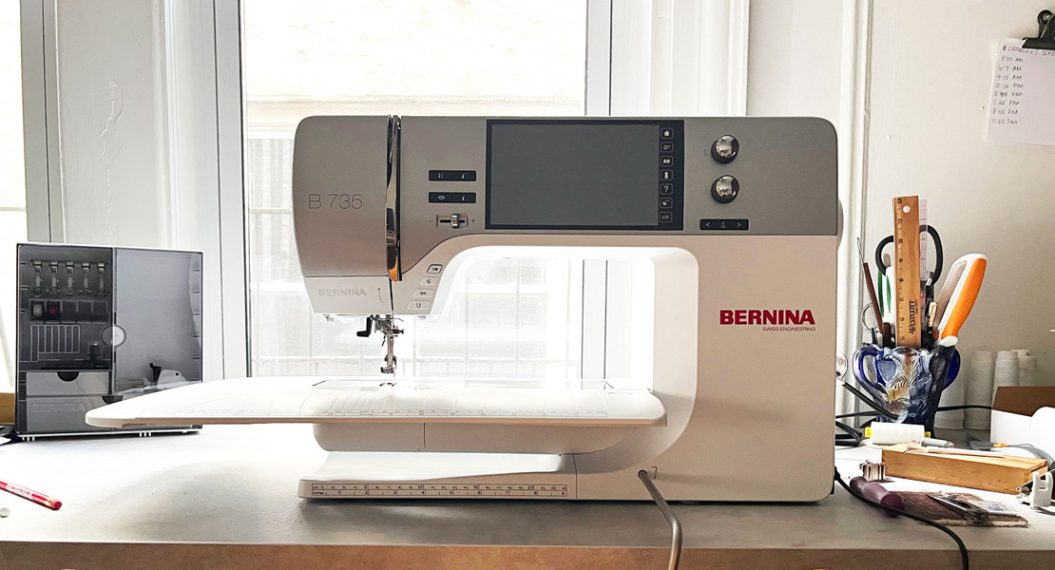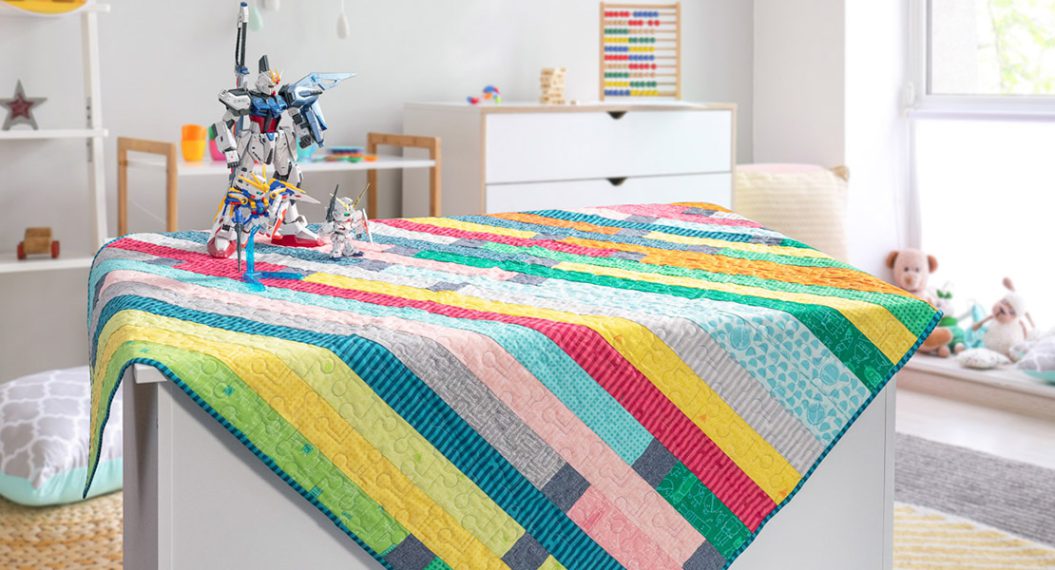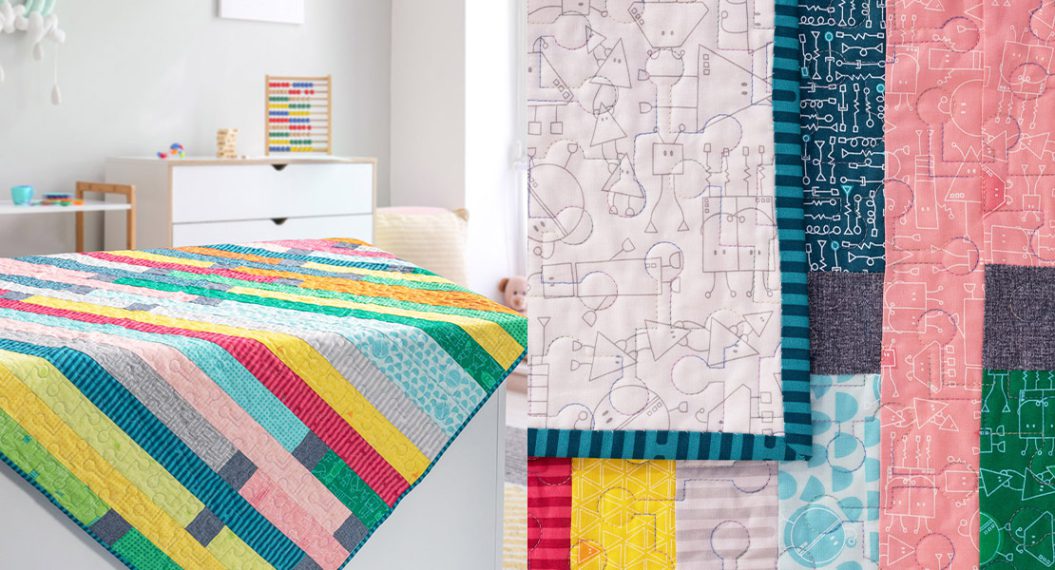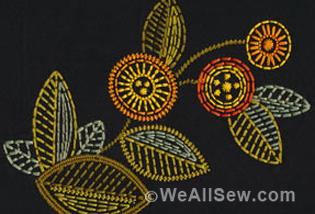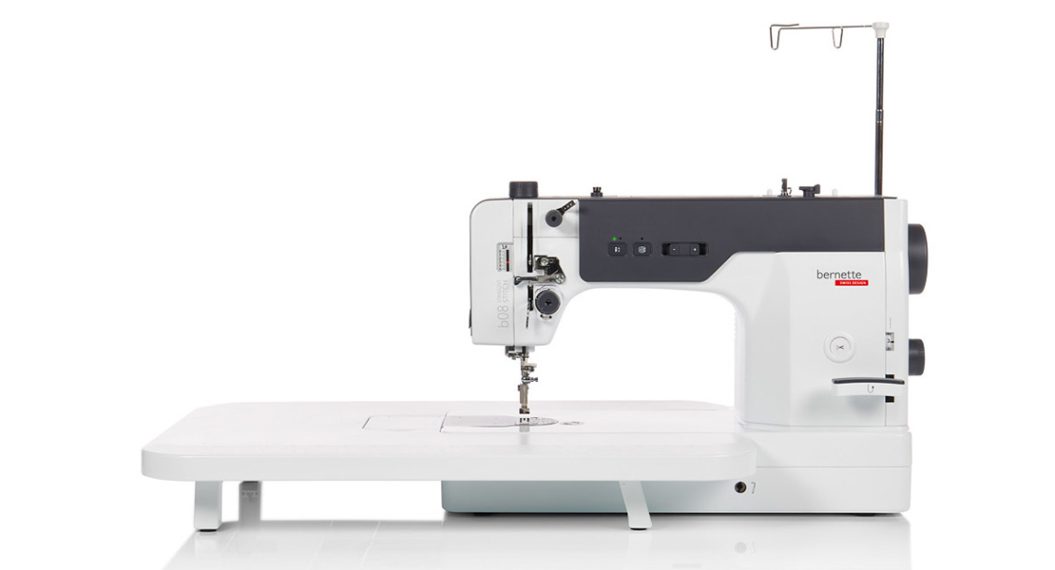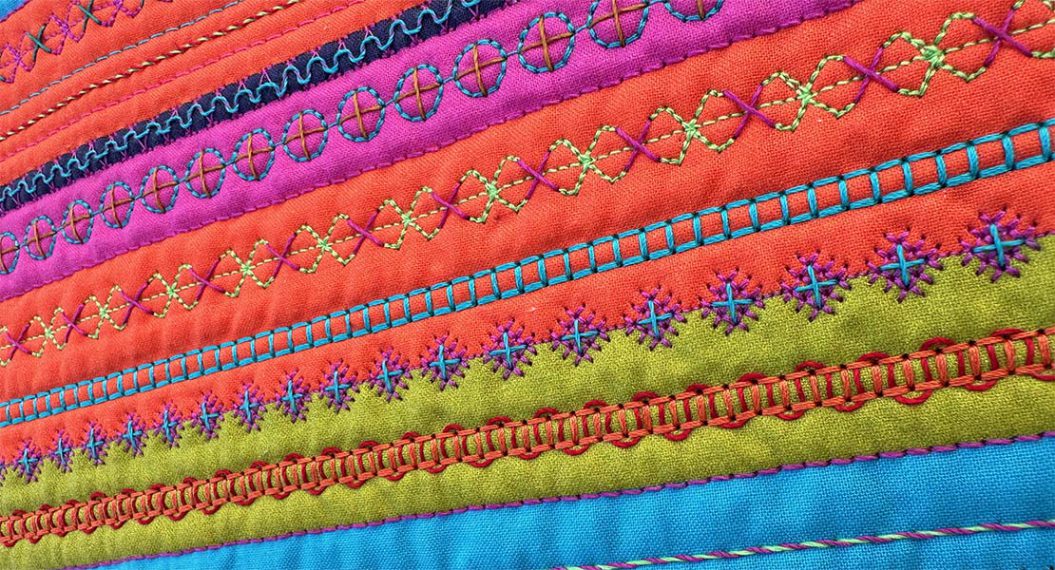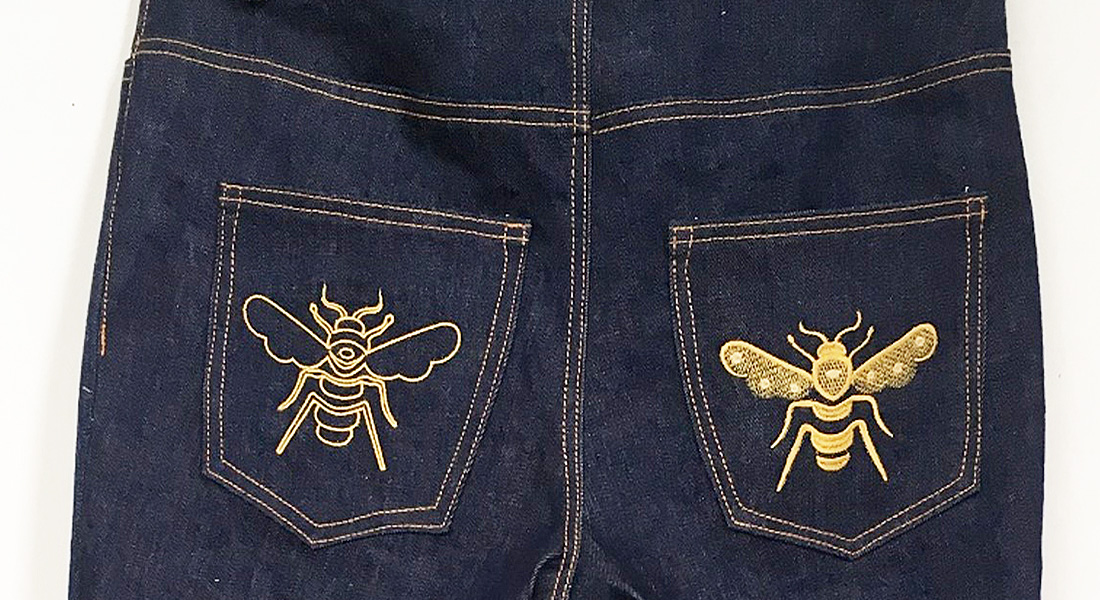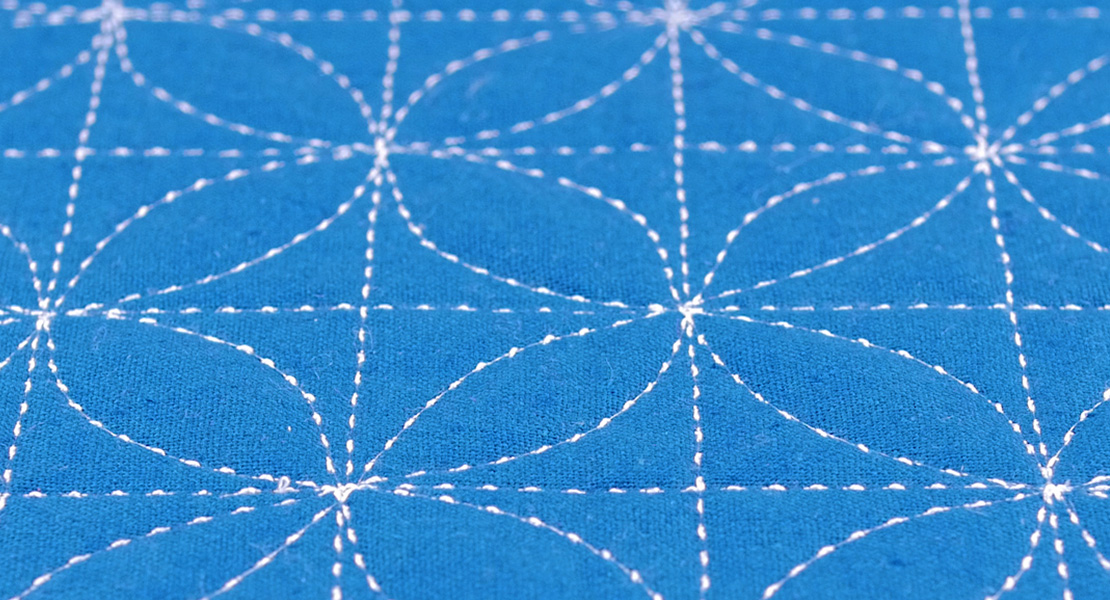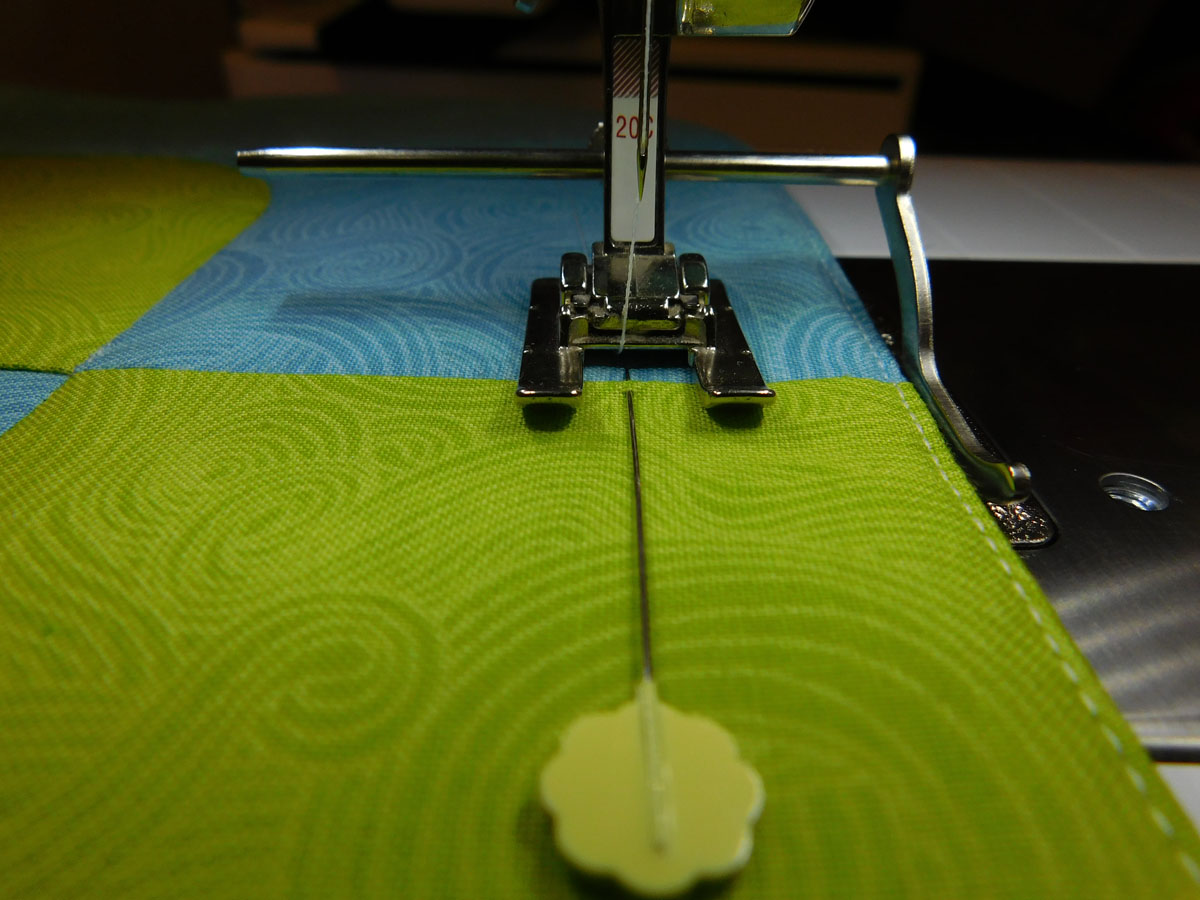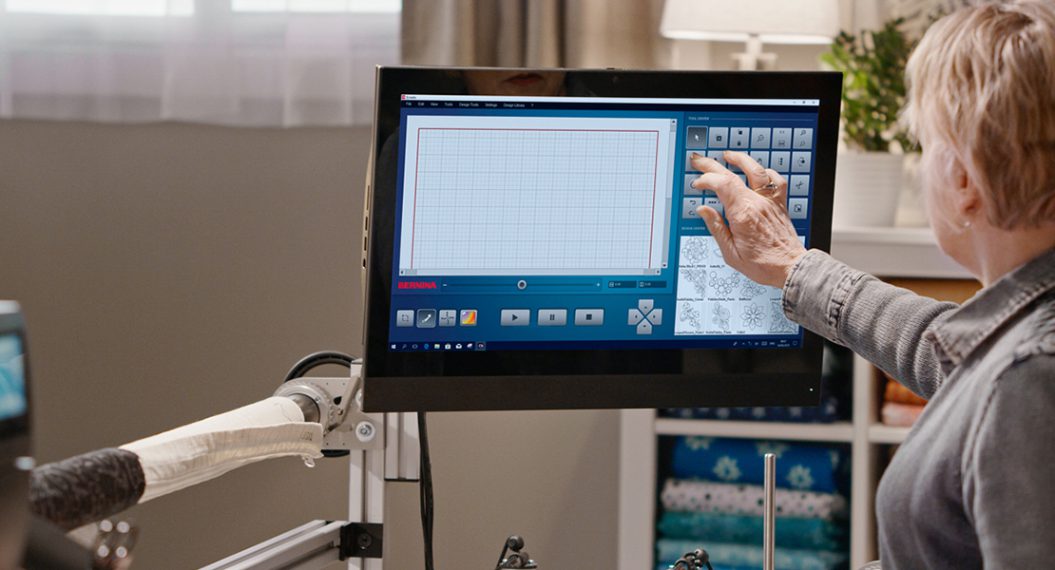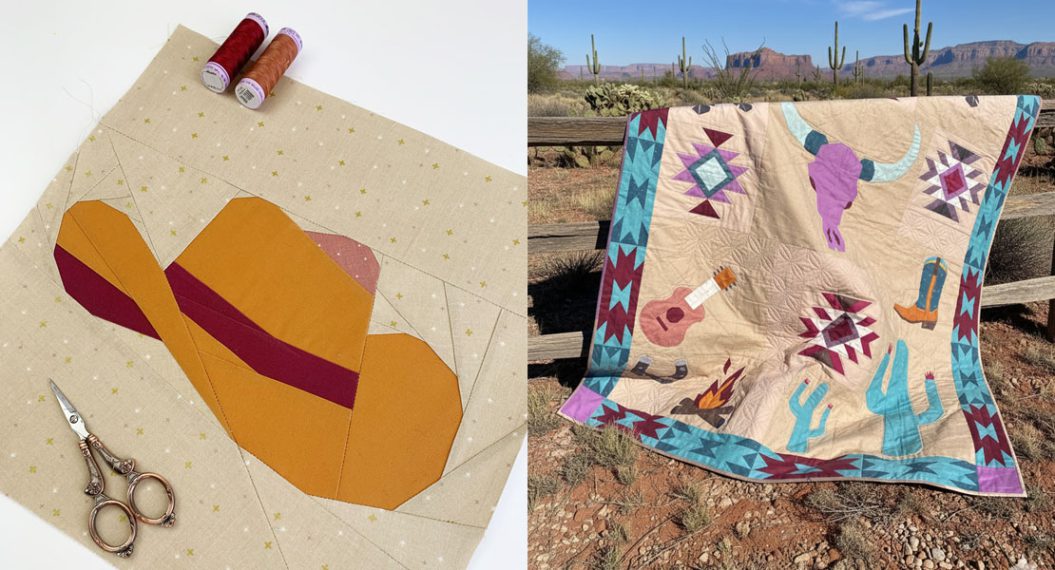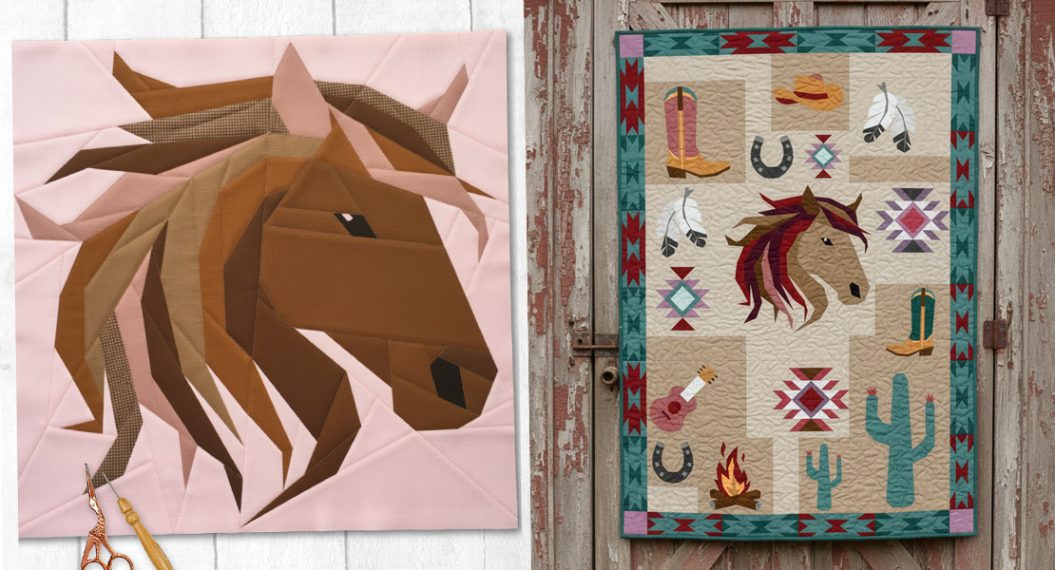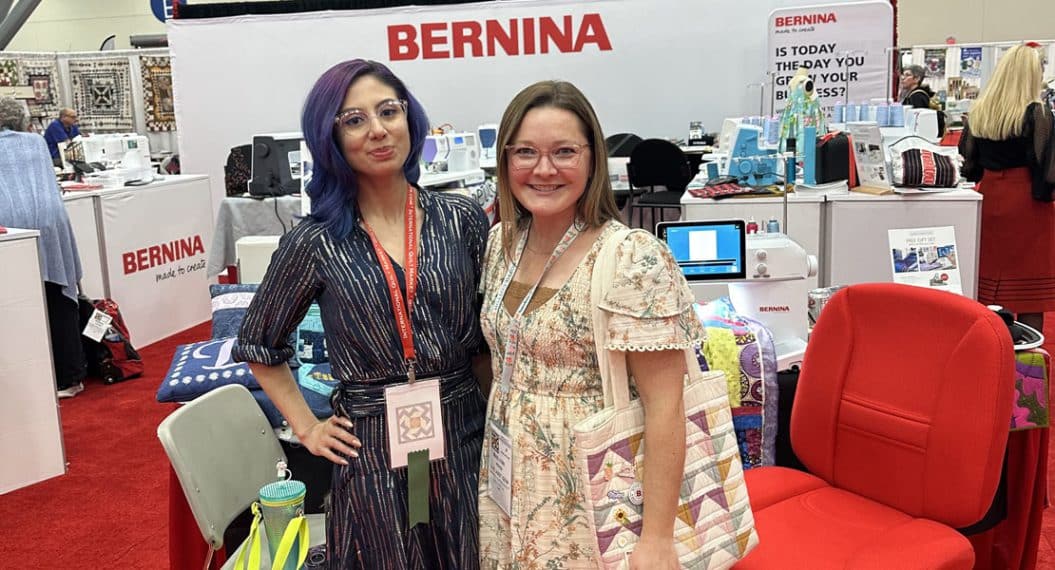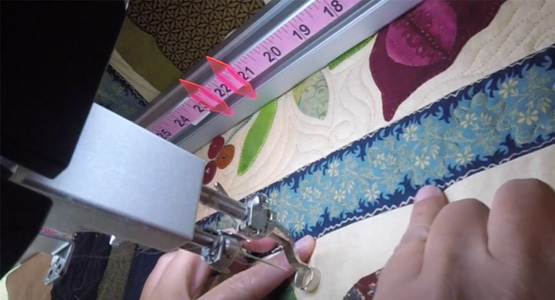Find Your Natural Stitching Speed
Driving a sewing machine is very similar to driving an automobile. When you are driving a car you have a gas pedal that regulates how fast your car goes. The foot pedal on your BERNINA sewing machine is like the gas pedal on your automobile. The more you press it down, the faster you are sewing. The difference is the path you are traveling. In a car, the road speeds underneath you as your tires grab the pavement. With a sewing machine, your path of fabric speeds underneath the needle as the feed dogs grab the cloth.
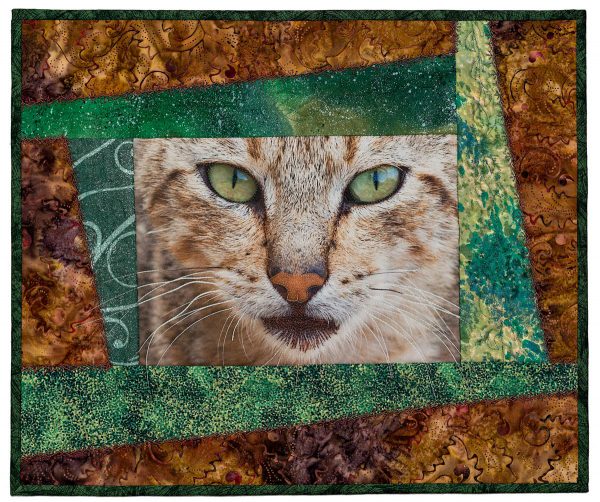
You steer your course along the road with the driving wheel of your car. When stitching your project on a sewing machine, you guide the fabric under the machine’s needle. In both cases the path you are following should dictate your speed. If you are motoring along a highway you cruise at a different speed than when you are on a winding country road. On the curving road you slow down for the curves and speed up for the straight stretches.
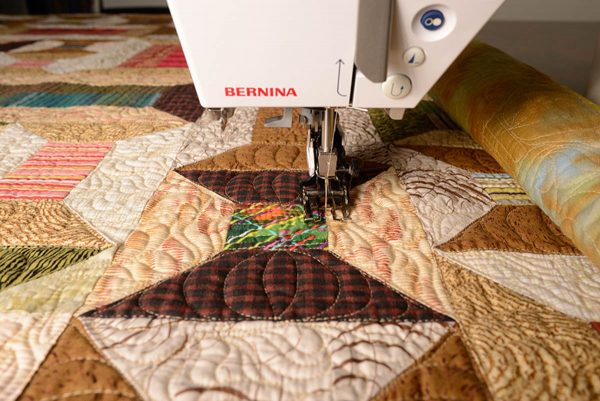
Thus, if you are “stitching in the ditch” along seam lines in a quilt block and you want to “hide” your stitches in the shadows of the seam, your speed is determined by the shape of your block pattern. The “ditch” in a block pattern is created when the seam allowances on the back of the quilt block have been pressed in one direction. This creates a high side and a low side. The low side, or shadow side, is where you stitch as close to the seam as possible to hide your stitches. If you stitch too fast then you can drive out of the ditch and your stitches show on the high side of the seam.
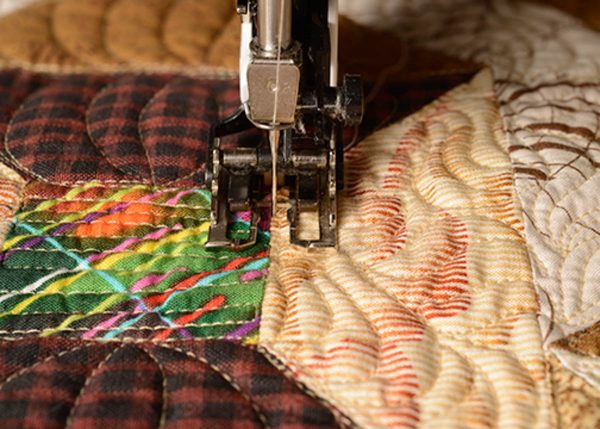
As an aside, when you are stitching multiple layers of fabric it is especially helpful to have even feeding of the fabric from both the top and bottom of the quilt sandwich. To accomplish this you can use the BERNINA Walking foot #50 , or for those BERNINA sewing machines equipped with it, simply engage the BERNINA Dual Feed with the “D” presser feet. The “D” presser feet have a cut-out at the back for engaging the Dual Feed. An example of a “D” presser foot would be the Patchwork foot # 37D .
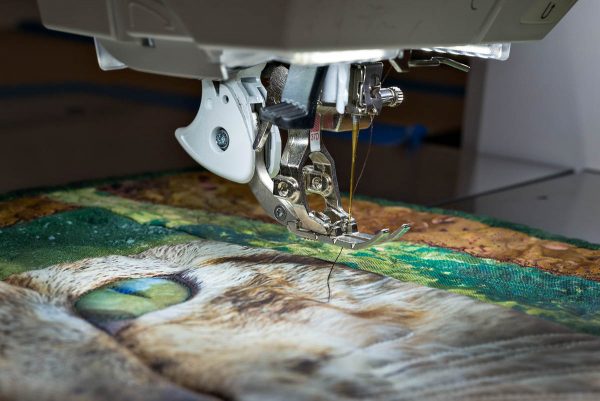
It is perhaps with free-motion quilting that finding your own natural stitching speed is most important. Free-motion quilting is the process by which you drop the feed dogs and you move the fabric under the needle to create your stitch line. With the feed dogs dropped, you have 360-degree control of how you move the fabric underneath the needle. You can think of your needle as a pencil held in a holder and you are moving your artwork underneath it to create your lines.
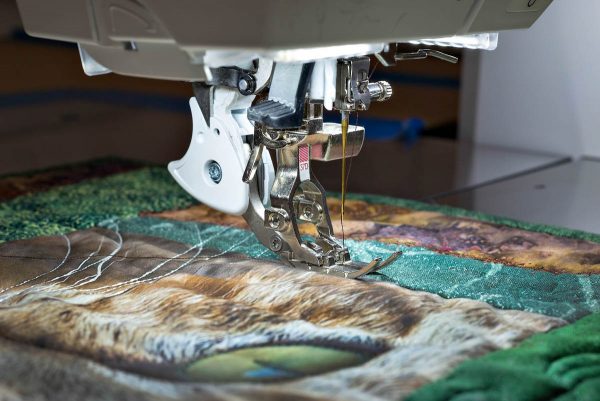
The coordinated movement of the fabric under the needle with the speed of your needle controlled by the presser foot creates the length of your stitches. The goal is to have stitches of even length in your free form stitch line.
Quilting a free-motion design is not a speed contest. It does not matter whether you are free-motion stitching manually with a presser foot like the Free-motion embroidery foot # 24 or the BERNINA Stitch Regulator (BSR), your goal is nice even stitches.
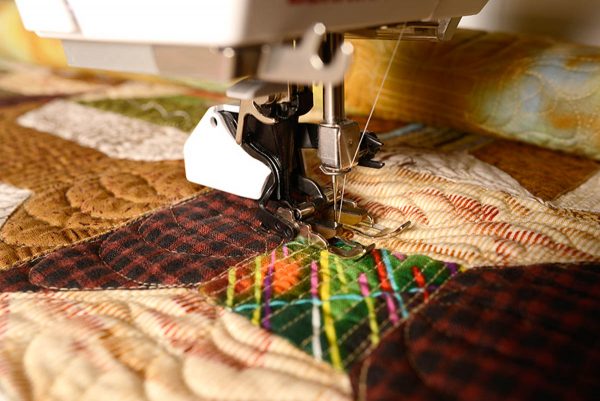
We are all different in how we do things, and if you are going to spend hours stitching your free-motion design, it is helpful to relax and enjoy the process. What you want to find is your natural stitching rhythm. If you are too tense it will show up in the stitching as erratic changes in the direction of the stitch line. But without attention and focus, your stitch line will have uneven stitches. It’s all about finding the balance that works for you.
Just as on the highway speed kills, a speed too fast for your control can destroy the beauty of your stitch line. The slide speed control on my BERNINA 750 QE never goes past the quarter mark. I stitch only as fast I control the direction of the stitch line. Slow down and savor those stitches.
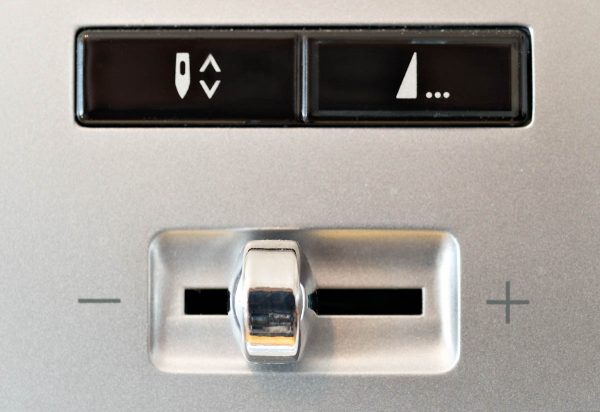
My favorite way of getting into my natural stitching zone is music. I find that instrumental arrangements playing in my studio allow my hands and foot to synchronize with the beat of the music as I stitch. Even with the BSR where the pressure on the foot control is constant, the music helps me to glide the fabric underneath the needle.
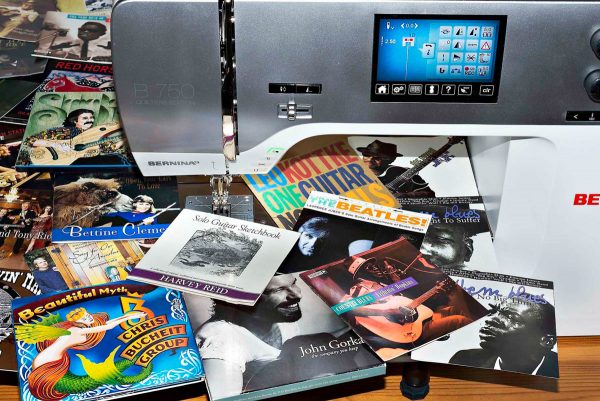
I remember Libby Lehman telling me at a quilt conference that she played “Western Swing” dance music in her classroom to get her students into the rhythm of stitching their projects. The music you choose is as personal as your quilting style. And it can change depending on the project. There are some art quilts that I have done that called for the “Blues” when I was stitching them. Others stitched better to folk music or classic Rock and Roll, like the Beatles.
The important thing is to relax and enjoy the process.




